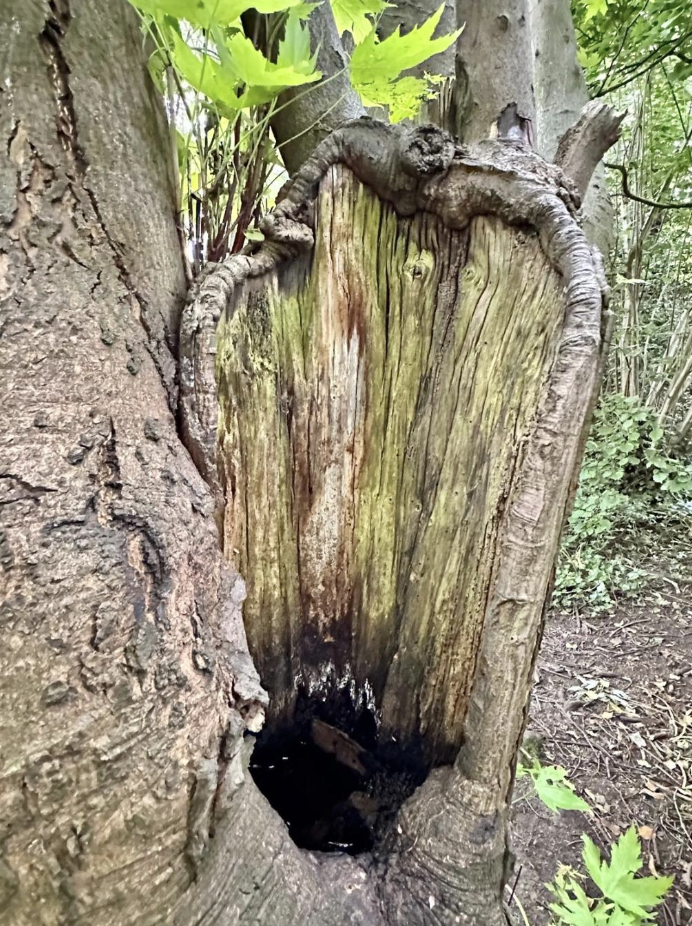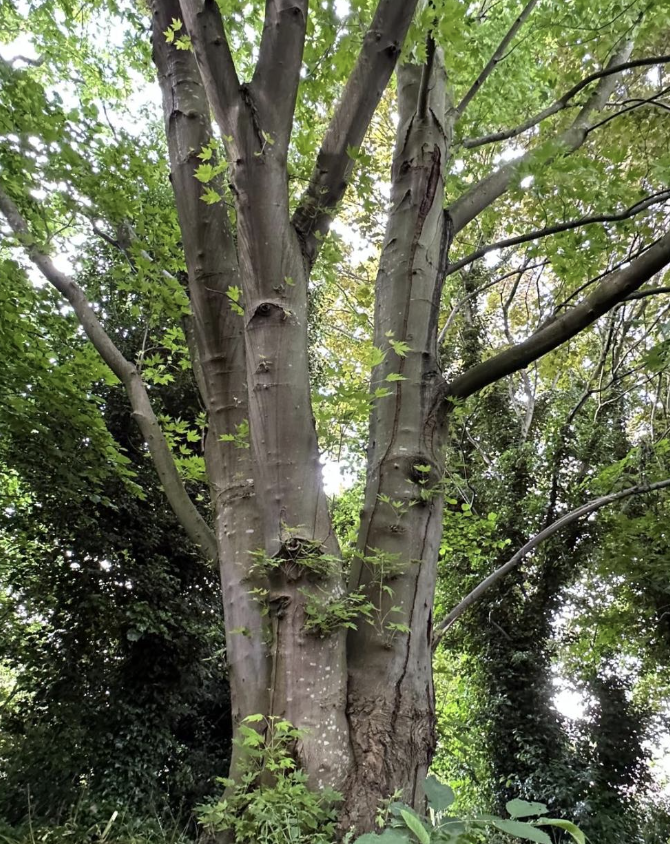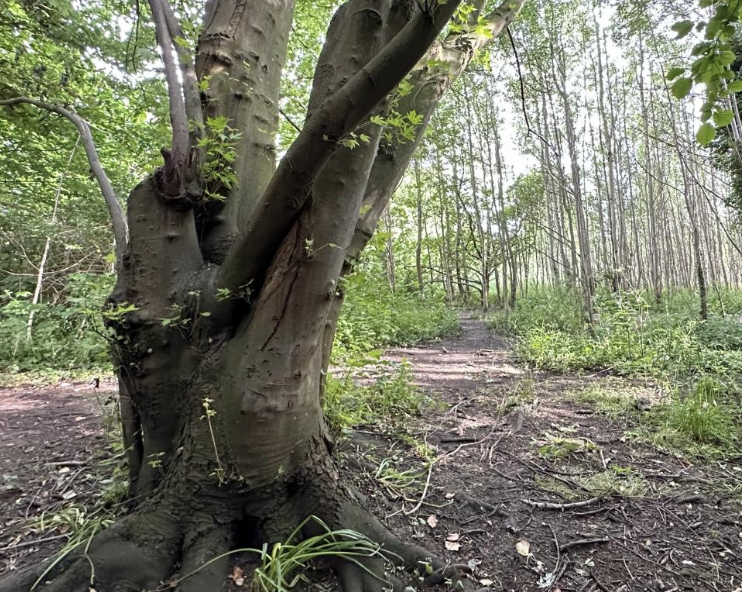


The Wishing Tree, on Ryebank Fields, is located at the inside edge of the Aspen Grove where it meets the North-eastern Copse. The tree is not easy to spot at first so you may have to search to find it.
The Wishing Tree is a Silver Maple, Acer saccharinum, disnguishable by its delicately palmated leaves which have a downy silver underside that produces a radiant eect when exposed to the light.
There are many maples on Ryebank Fields, but this tree is special due to the wishing well that lies hidden in its trunk. The trunk is forked with at least four limbs having branched out from its centre. It would appear that damage to one of these limbs has caused it to break off resulng in a hole which has subsequently filled with rainwater to create our well.
It is believed that if you make a wish out loud at a wishing well your wish will come true!
Please don’t disturb the water or place coins or any other objects in the well as a tree hole is a mini ecosystem that is often overlooked. The well water contains decomposed leaves, mosses and twigs which provide energy for bugs, bacteria and larvae to thrive. In turn the insects that evolve from here provide a food source for birds and small mammals.
Wishing trees are popular in many cultures around the world, for example, the Hindu Banyan tree, the Japanese Tanabata, and the Celtic Clootie. These trees are identified as having an intrinsic spiritual value as it is believed that wishes are granted by a specific nature spirit or religious entity associated with the tree according to local traditions.
The Silver Maple is often found along waterways and in wetlands, leading to the colloquial name of ‘water maple’. It’s therefore significant that many maples are found on Ryebank fields as the area was previously known as ‘the Isles’ as it was made up of a series of streams and tributaries to the River Mersey.
Maples can live for up to 130 years and are highly adaptable trees that can happily exist in many different soil types and climates. Their seeds are joined together in winged-pairs called samaras, which fly and spin on the wind like mini-helicopters to aid their dispersal.
Its rapid growth and resilience make the Silver Maple a symbol of strength and fortitude. In folklore it represents life, longevity and balance. The wood is said to be protective and for this reason was often incorporated into door frames. Maple is also associated with offerings. The tree feeds people with its sweet sap (maple syrup) and wildlife uses the tree in various ways: the seeds are a primary food for squirrels and for birds who find a safe haven to nest in its wide, sprawling branches, and its leaves are rich in nutrients for moths.
Maple is one of the most prominent trees on Ryebank Fields with various types growing there including the Silver; Norway; Red and Sycamore varieties.
Manchester Metropolitan University (MMU) unfortunately have previous form for failing to recognise the value of this much-loved tree. In 2012, they destroyed a striking row of mature Maple trees along Stretford Road to make way for the construction of their Birley Campus.
By Julie Ryan
If I had two wishes, I know what they would be
I’d wish for Roots to cling to, and Wings to set me free;
Roots of inner values, like rings within a tree,
And wings of independence to seek my destiny.
Roots and Wings by Denis Waitley